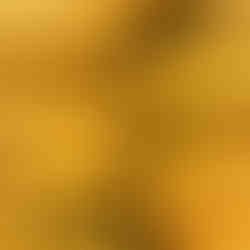'The wine of kings, and the king of wines' - Louis XIV
- Iván González Gaínza

- Jan 5, 2019
- 3 min read
Updated: Jul 20, 2023
SWEET WINE
Often unappreciated and considered the underdog of wines, relegated to the top shelf and rarely requested. This is a wine that has had a glorious past but its future remains uncertain, which is a shame as this unsung hero dates back to Greek and Roman times.

Shakespeare was keen on sweet fortified MALVASIA wine from the Canary Islands (then called Malmsey) and he even mentioned it in his play 'Henry IV':
"But, i' faith, you have drunk too much canaries; and that's a marvellous searching wine, and it perfumes the blood ere one can say. 'What's this?' How do you now?"
Often when I offer sweet wine to our clients the reaction is the same, “No thanks, it’s too sweet”...Quelle surprise! The more adventurous were allowed to choose between 6 and 8 different sweet wines by the glass. This choice creates a multitude of pairing possibilities that are not just restricted to desserts but can also be enjoyed with many other food options such as cheese, Foie Gras or duck.
Yes, sweet wines are sweet, but if you can get past the label you will discover another world within the world of wines and you will understand why Louis XIV called them 'The wine of kings, and the king of wines'.
Some sweet wines still have some acidity and are refreshing to the palate. At the other end of the spectrum, there are sweet wines with cocoa and plum flavours. And in between, with their soothing textures, there are a whole range of fruits and spices to seduce you. Flavours such as apricot, raspberry, blackberry, banana, melon, sweet grape (of course), dried figs, raisins, honey and even chocolate are waiting to be discovered inside these lovely bottles of sweet wine.
Normally sweet wines are presented in the smaller format of 50cl or even 37,5cl bottles. This is because you need a larger percentage of grapes per bottle when making sweet wine, which makes it more expensive. In addition, some sweet wines can have more sugar than a can of soft drink, though you only need to drink a very small glass of sweet wine so a smaller bottle is perfectly adequate.
Unlike regular wine, sweet wine will keep for a longer period as the level of sugar in it preserves it very well. This is exactly why sweet wines were widely made in the past. It was easier to transport by sea or across the land, without the risk of it turning ugly before arriving at its final destination.
Sweet wine went out of fashion when new winemaking techniques were introduced, when the use of sulphites to stabilize wine became more widely used and when methods of transport improved in the 20th century.
However, a lot of vineyards still create sweet wine today so it is worth exploring what there is to offer and the story behind them. Most producers have a great connection with their past and refuse to stop creating this lovely ancient tradition.
Here is a selection of some of our favourite sweet wines. Perhaps, after reading this article you will be persuaded to try some:
- Enrique Mendoza Moscatel de la Marina. The ratio of satisfaction to price in this bottle is out of this world. Youthful and with more character than it appears at first glance.
- Suertes del Marques Blanco Dulce. Made with Listan Blanco and Malvasia in a solera system. Only 100 bottles are produced every year.
- Bodegas Biniagual Memories de Biniagual Dolç. Light, not too sweet and easy to understand. Perfect for beginners.
- Bodegas Ribas Sioneta Rosat. A sweet rosé made with the local Mantonegro grape, packed with small red fruit flavours.
- Hidalgo Pedro Ximenez. This dense delight is normally enjoyed in Andalusia, where it comes from, but it is now famous everywhere.
We hope that next time you are offered a sweet wine you will be encouraged to say yes so that you can immerse yourself in another wine experience as we have done.









































Comments